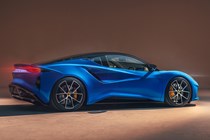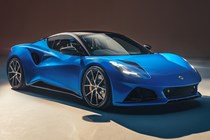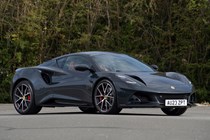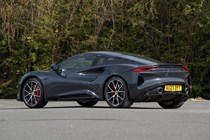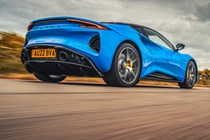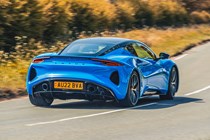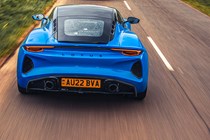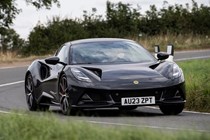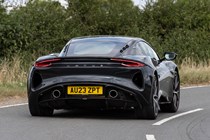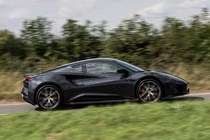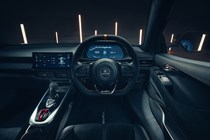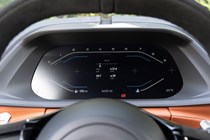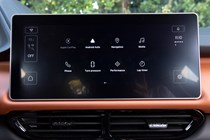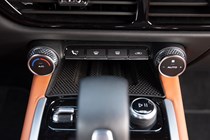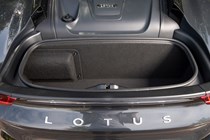
Lotus Emira review
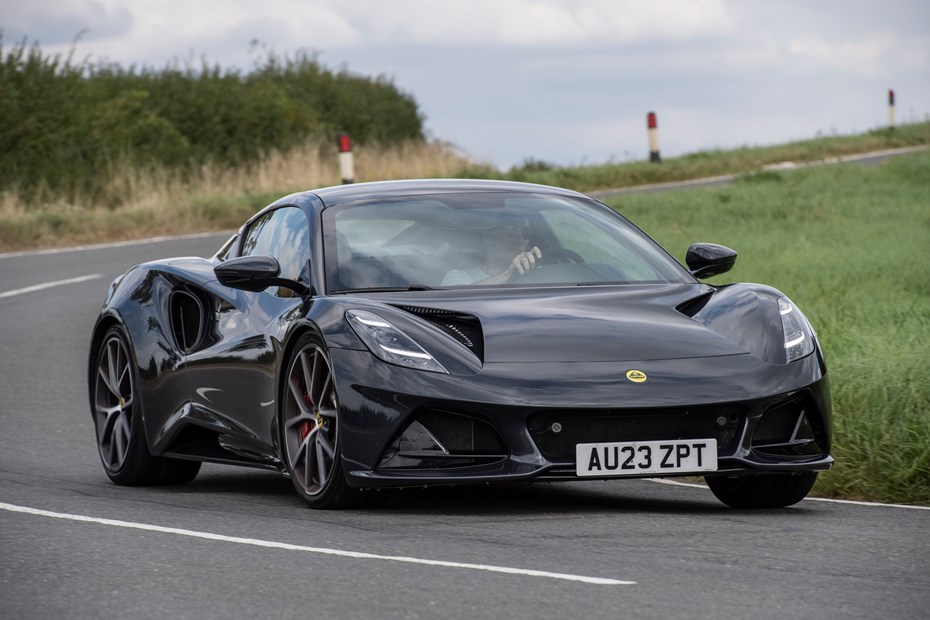
At a glance
| Price new | £82,650 - £88,950 |
|---|---|
| Used prices | £49,110 - £75,710 |
| Road tax cost | £600 |
Get an insurance quote with

|
|
| Fuel economy | 25 - 30.7 mpg |
| Miles per pound | 3.7 - 4.5 |
| View full specs for a specific version | |
Available fuel types
Petrol
Pros & cons
- Junior supercar appearance and prowess
- Sensational power and performance
- Handling and steering are brilliant
- Not even the pretence of rear seats
- No sub-300hp 'entry-level' model
- Interior doesn't quite have Porsche quality
Lotus Emira Coupe rivals
Overview
Since Lotus was founded in 1948, it’s produced some of the best sports cars on the planet. The company’s greatest hits include the original Elan, the razor-sharp Elise and the storming Exige. But the company is about to deploy its electrification strategy, which means it’ll soon make petrol power redundant. So, say hello the Emira. It’s the last combustion-engined car Lotus will ever produce. The final encore.
Lotus has been owned by the Chinese automotive giant Geely since 2017 – the same firm that’s behind Volvo – and, under its new stewards, the British sports car brand has formed a plan to expand into new areas. Headline-grabbers include the 2,000hp Evija hypercar and controversial Eletre SUV, both of which are 100% electric powered.
The Emira is a relatively compact mid-engined sports car – and, by mid-engined we mean that, in this case, you can literally see the petrol engine in the rear-view mirror. It replaces the old Lotus Evora, and its goes up against two tough competitors: the Porsche 718 Cayman and the Parkers award-winning Alpine A110.
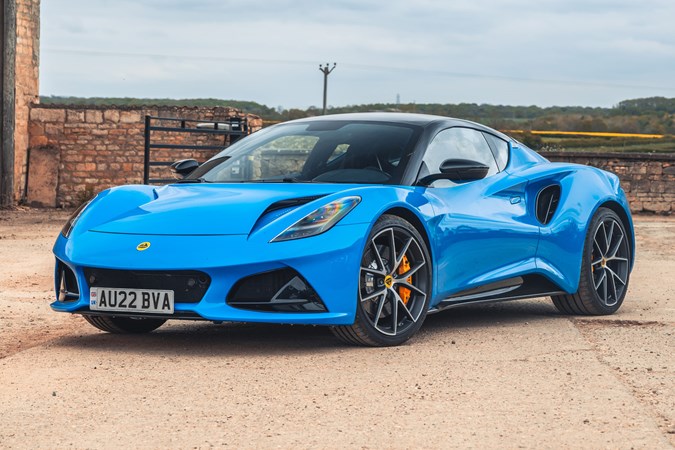
The Emira is an all-new car underneath, and immediately much more user friendly than previous Lotus models – even if it is still slightly more difficult to get in and out of than either of its main rivals. Compensation for that minor inconvenience is massively over-delivered by the Emira’s appearance, though, which is every bit as dramatic and eye-catching as full-blown supercars costing many times the price.
As such, if you’re in the market for what we reckon should be called a ‘junior exotic,’ the Emira is an outstanding place to start. It makes the Cayman look positively ordinary and the Alpine rather reserved, and that’s having driven both back-to-back with this Lotus.
There’s just one small problem. The price. Currently, every version of the Emira costs more than £80,000, making it around £30,000 more expensive than both the Cayman and the Alpine. It certainly isn’t a bargain-priced affair, and that may take this Lotus out of the reach of previous owners who could justify the much cheaper Elise. The question is, can the Emira justify its price? Scroll down to find out.
What’s it like inside?
It’s certainly attractive and it’s loaded with all the latest technology modern sports car buyers expect. There’s a 12.3-inch digital instrument display behind the wheel and a 10.25-inch infotainment system in the centre of the dash which offers the usual navigation and entertainment features, along with a G-force meter, a tyre-pressure monitoring system and a lap timer.
It’s a shame the technology doesn’t work as well as it looks, though. The software is achingly slow to respond to commands. It takes several prods at the drive mode switch before you can swap between drive modes and touch commands on the central screen don’t always register. Not ideal in an £80,000 car.
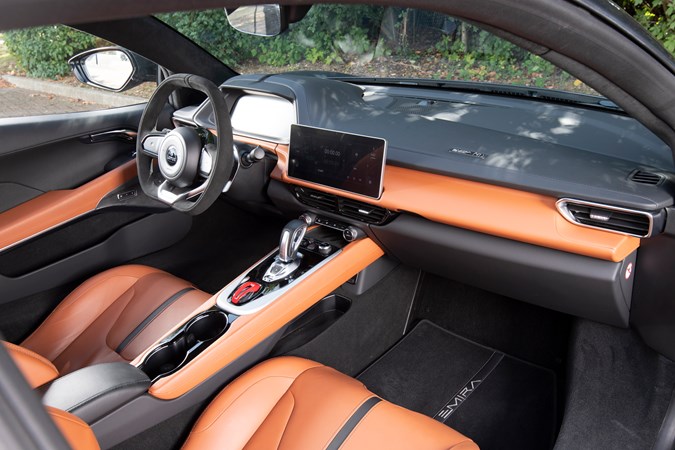
Some of the switchgear is shared with other cars in the Geely portfolio (most notably Volvo and Polestar) but Lotus has put enough of its own stamp on them for the cabin to feel special. The borrowed bits are better quality than the Renault parts in the Alpine A110, but it retains a sense of having been put together by a small-scale manufacturer rather than a massive car company. The clamshell for the start button feels a little flimsy, for example. This will appeal to buyers seeking something ‘bespoke’ but may alarm those used to shopping at Porsche.
Lotus has also retained physical controls for the Emira’s audio and climate functions, which is great. It means you don’t need to take your eyes of the road to operate them – and that’s a welcome splash of common sense considering the car has up to 400hp.
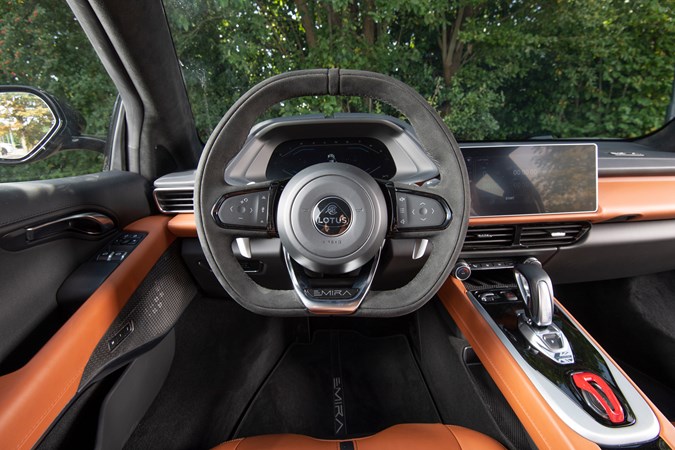
Interior storage space is generous for this kind of car. You get a smartphone tray ahead of the gear selector, cupholders in the centre console and a handy storage space behind the rear seats which is ideal for carrying holdalls. Its cabin is certainly more practical than the Alpine A110.
However, boot space is limited to a 151-litre space at the rear of the car, behind the engine. Its proximity to the engine means it gets rather warm and, unlike its rivals, the Emira has no additional front storage under what would usually be the bonnet.
Comfort
The Emira is surprisingly comfortable for a sharp-handling sports car. This has always been Lotus’s party trick, though – and a big part of this comfort is down to the car’s suspension setup which works better with the road surface the faster you go. More on that later, though.
The seats are very comfortable, but we’d have liked for them to offer a little more lateral support. When you really stick it into a corner, you’ll find yourself bracing your body against the wheel. We also found the seats to be mounted too high.
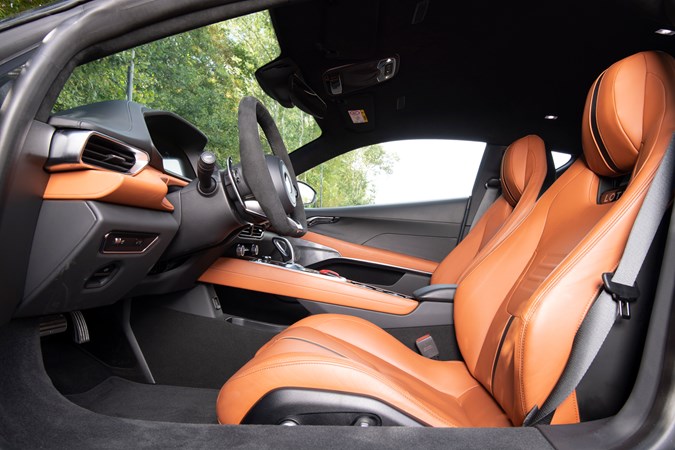
Yes, you sit low in the Emira, but it felt like there were a couple more inches of vertical adjustment available that we couldn’t access. If you’re tall, you’ll find the seating position a little frustrating as you need to crane your neck under the windscreen to see where you’re going. The sun visors will be useless to you also, because they’ll block too much of your vision.
The steering wheel makes up for the lofty seats by offering loads of vertical and horizontal adjustment. And you soon forget about these foibles when you get the Emira on a good stretch of road.
What’s it like to drive?
As exciting as it looks, which is saying something. But it reflects Lotus’s long-established genius for building brilliant driver’s cars. What’s best about the Emira is that it combines this ability to thrill with an approachable character that quickly defuses any anxiety its exotic appearance might cause. This car is great fun, and capable of big speeds, but it’s intuitive enough to not be scary.
Part of the secret here is in the way Lotus communicates to the driver what the Emira is doing. The steering, for instance, is delicate but loaded with information and very well-tuned to the reactions you get when you turn the wheel. The Emira isn’t super-lightweight in the way of Lotuses past – at upwards of 1,405kg its actually rather chunky – but the car changes direction sharply and precisely in a manner that still feels superbly nimble.
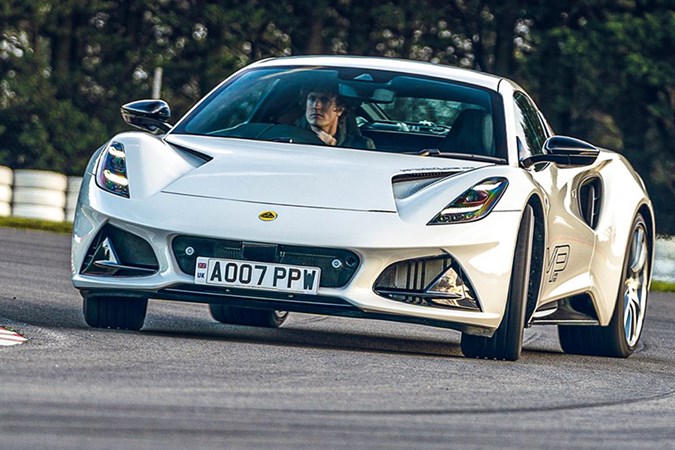
The resulting handling is close to sublime. There is still some body roll but, like all the best sports cars, this is always controlled and the movement helps you understand what’s going on with the road beneath you. The limits of the car’s capability arrive clearly and calmly rather than abruptly and dangerously. A standard-fit limited-slip differential on manual-gearbox cars adds further reassurance.
What’s more, forward visibility is excellent. The Emira’s low nose disappears immediately from view, leaving the twin humps of the front wheel arches in your vision in a manner reminiscent of the Porsche 911. Their high point is directly over the front tyres’ centre lines, too, which means you’ve no excuse for getting a corner wrong. You can see plenty behind you and over your shoulder, too, again helping to lessen any intimidation factor.
There are two engines to choose from. The cheapest model is fitted with a Mercedes-AMG-sourced turbocharged 2.0-litre four-cylinder unit with 360hp and 430Nm of torque. The flagship variant (which is the one you want) has a 3.5-litre V6 churning out 400hp and 420Nm of torque. The latter unit also comes with a six-speed manual gearbox as standard, while the four-banger gets a seven-speed automatic.
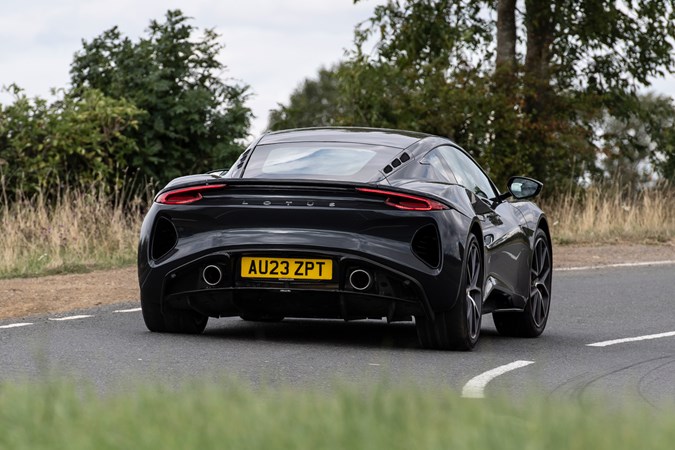
And it’s this automatic gearbox that ruins the experience for the four-cylinder car. It simply isn’t fast enough to keep pace with the way the Emira gathers and sheds its speed. You’re in a constant battle with the software. It prevents you from downshifting when you’re braking into a corner and delays your upshifts when you’re accelerating on a straight.
It’s a real shame, too, because the engine is quite characterful. It’s a little rough at low speeds but, once you’ve pushed into the top third of the rev-counter, it comes alive. It’s fast, too – almost as fast as the V6, in fact. It gets from 0–62mph in 4.3 seconds, which is only 0.1 seconds behind the V6 model. Plus, its turbo whistles like a budgie every time you lift your foot off the throttle.
The 3.5-litre V6 suits the Emira’s demeanour better and it feels a little more special. Like the four-pot, it doesn’t sound especially charismatic at first but, with 400hp driven by a supercharger, it has a smashing amount of performance. There’s also a hugely evocative howl to be enjoyed at higher revs. Cruising refinement is absolutely fine for a car of this type, though with plenty of mechanical noises providing background ambience the experience is also quite raw.
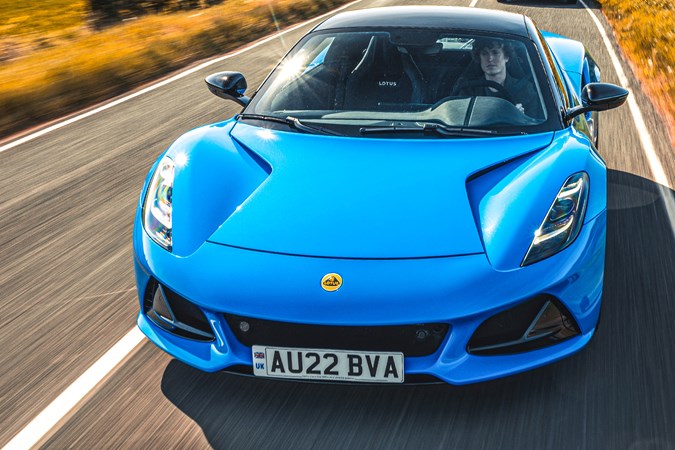
The only potential bugbear with the V6 is its manual gearbox. We loved swapping the Emira’s cogs ourselves, but it’s worth noting the car’s shift action is stiff and its clutch pedal is heavy. Changing gears quickly takes a lot practice and precision, but it’s incredibly satisfying when you get it right. For a car like this, it’s well worth it. Just hit your legs and arms more often in the gym to get used to the strain.
You can choose from three drive modes, called Tour, Sport and Track. They enable some tuning of the car’s responses, but because Lotus uses only passive shock absorbers, rather than the adaptive items often available in other fast cars (such as the Porsche Cayman) you can’t alter your damping on the fly.
Instead, Tour and Sport chassis options are available from the factory, which involves Lotus’s technicians physically bolting the Tour or Track suspension components to the car. Our test car had the Sport setup, which can feel quite harsh at low speeds. It gets much more comfortable as you go faster but, for a day-to-day car rather than a track weapon, we suspect the Tour chassis will be a better choice.
What models and trims are available?
For now, the both versions of the Emira (the four-pot and the V6) are only available in Lotus’s First Edition trim. It comes with all the bells and whistles, which goes some way to justifying its high price tag. Standard equipment includes 20-inch forged alloy wheels, upgraded brakes, 12-way electrically adjustable sports seats, Alcantara headlining and a premium KEF stereo system.
Lotus has already confirmed there’s a cheaper version of the car coming in mid-2024, but the firm hasn’t yet released a price for it. It will have less standard equipment, though. Its seats are only four-way adjustable, its alloys are cast rather than forged and you get a simpler audio system.

Our intel suggests the V6 base model will have a starting price of less than £70,000, while the cheaper four-cylinder Emira will be closer to £60,000. This is subject to change, however, especially with current rising prices in general.
If you only want some of the equipment from the First Edition car on your entry-level Emira, you’ll be able to choose from a wide range of options. These include the 20-inch forged alloy wheels and the uprated sound system, plus LED headlights, a titanium exhaust surround and black exterior trim. In addition, these choices will bolstered by four option packs. Click through to the next page for our final verdict on the car.



